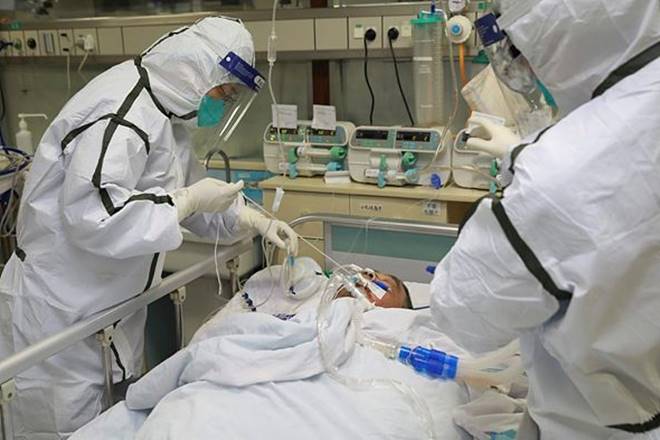In Coronavirus Fight, India plan to Give Citizens a Color Code, With Red
 NEW DELHI : Red, orange and green which everybody knows are the color code for traffic lights and are typically used to denote different things, will now be used on the country’s map to COVID-19 and virus-free zones, and therefore people’s movement.
NEW DELHI : Red, orange and green which everybody knows are the color code for traffic lights and are typically used to denote different things, will now be used on the country’s map to COVID-19 and virus-free zones, and therefore people’s movement.
Prime Minister Narendra Modi spoke to state chief ministers yesterday. It is believed that most state leaders want to extend the lockdown in order to contain COVID-19 before the number of jump higher up. If reports are to be believed, the Indian government could divide the country into three colour-coded zones to facilitate containment and diagnosis.
The palette is expected to include red, orange, and green zones. The ‘red zone’ will clearly represent the hardest hit areas, or hotspots. The ‘orange zone’ will include places with a lot of cases, but not enough to trigger a complete shutoff. And lastly, ‘green zones’ would most probably include places with the least number of cases
Red Zones
In the red zones, a complete lockdown will continue to be enforced.These are districts with a sizeable number of cases. And also the ones that have already been declared hotspots by the government. Red zones will be sealed. And no non-essential movement will be permitted.
Orange Zones
The orange zones are likely to be districts that initially reported a cluster of cases – but have since flattened the curve. The likes of Bhilwara in Rajasthan could feature in this list. There will be a limited lockdown in orange zones, with partial operation of public transport.
But most crucially – agriculture harvest will go ahead as planned in orange zones. This will come as a huge relief to farmers living in these districts.
Green zones
Green zones are districts with zero COVID-19 cases. These districts could see minimum curbs — mostly in the form of strict social distancing norms. Already in force.Haryana has already moved ahead with this plan.
Red, orange and green – the colour code for traffic lights will now be used on the country’s map to COVID-19 and virus-free zones, and therefore people’s movement. After a meeting with at least 13 Chief Ministers yesterday, PM Modi had indicated that the lockdown will be extended – but there will be relaxations in certain areas and cases to ensure the survival of the economy as well.
Underscoring the importance of revival of the economy, PM Modi yesterday said, “In my first address I had said, ‘Jaan hai to jahaan hai (If there is life, the world will exist)’. We must now look at Jaan bhi, jahaan bhi (life and the world),
“The Prime Minister yesterday indicated that that relaxations will be allowed in the infrastructure sector, where lockdown hit the livelihood of thousands of migrant workers. Relaxations are also expected to be in the farm sector – crucial ahead of the harvest season.
The 21-day nationwide “curfew-like” lockdown, announced in the Prime Minister’s first address on March 14, has hit the nation hard. The World Bank has predicted that India will see growth of just 1.5-2.8 per cent in its current financial year, down from an expected 4.8-5.0 per cent for the year just ended.
The home ministry is also expected to come out with a list of sectors where relaxations are likely to be allowed. This will include food processing, aviation, pharmaceuticals, industries, construction etc. but social distancing will be the norm.
Coronavirus has spread to 185 countries. The total confirmed cases worldwide are 17,87,823 and 1,09,707 have died; 12,68,147 are active cases and 4,09,969 have recovered as on April 12, 2020 at
In India, there are 8,447 confirmed cases including 273 deaths. The number of active cases is 7,409 and 765 have recovered as on April 12, 2020 at 5:00 pm.
(With Agency Inputs ).

